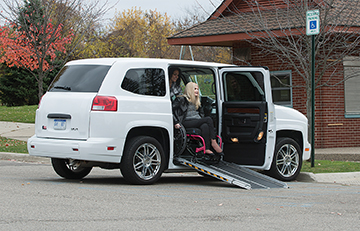
By Ryan Zemmer
There’s no substitute for “the right tool for the job.” Think back to a first apartment or home and the eclectic collection of hand-me-down tools, good and bad, inherited from various friends or family to “get started.” They aren’t the best assets out there, but it is usually enough to get the job done. As the years go by and the freebies start to wear out or go missing, it becomes time to find suitable replacements. It’s not until that shiny new asset is home and in use that you can appreciate the benefit of having the right tool for the job.
Having the right tool for the job doesn’t just apply to the weekend warriors, but it can carry through most situations. It’s not just about having something that will work, but something that will work the right way. It’s all about having the right asset in the right place. This philosophy can easily be applied to vehicle fleets and paratransit services. In many fleets, a wide range of tasks need to be accomplished, yet there is only one vehicle type in the stable. A diversified fleet helps ensure that all services are not only rendered, but done so efficiently. It doesn’t make a lot of sense to operate a 40-passenger bus if there’s only an average occupancy of three, nor does it make sense to operate a passenger van on the busiest avenue in town. It’s about finding the right fit.

If a given operation only has full-size buses, many benefits could be obtained by utilizing smaller vehicles within the fleet. The purchase price of the vehicles will be significantly less than their larger counterparts, as will the operational cost. One less axle at the tolls can save significant funds over the course of the fiscal year. Maintenance intervals are often longer than large vehicles, and fuel consumption is greatly reduced. Small transportation solutions can also double as supervisor vehicles. If a large bus has a mechanical malfunction, the supervisor vehicle could step in to transfer or transport a passenger that requires wheelchair access (and may not require a CDL to do so.)
A diversified fleet can also have its advantages when it comes to natural disasters. I think back to last winter when Atlanta received a bad ice storm. Many vehicles were abandoned in the streets for days in a sort of post-apocalyptic scene as the mess was sorted out. There is a great benefit in easily navigating through the vehicle barriers or similar wreckage from a hurricane. Diversifying the fuel type in a fleet can also help ensure the agency is prepared for any situation. If the electrical grid goes down, most diesel and gasoline pumps will become inoperable, whereas CNG can still be obtained.
A certain level of comfort can come with a standardized vehicle fleet, but it can also create inefficiencies and shortcomings when trends change or the unexpected happens. A diversified fleet can help ensure that agencies have the right tool for the job, regardless of challenges that may present themselves.
Ryan Zemmer is marketing manager for Mobility Ventures, South Bend, IN, manufacturer of the MV-1 vehicle. Please visit www.mv-1.us to discover what the versatile MV-1 can bring to your paratransit operation.
